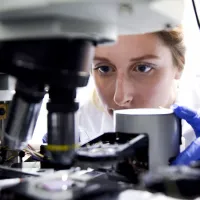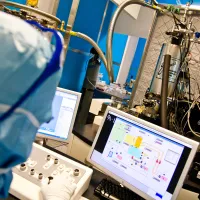About the Etching facility
Etching is a key fabrication process for pattern transfer after lithography. We have both dry etching and wet etching systems which can be used in:
- silicon processing
- metal etching
- dielectric machining
- thin film processing
- semiconductor materials (type II, III, V, and N).
Wet etching
Wet etching provides a simple and cheap method of pattern transfer, but gives little control over the etch profile. We offer wet etches and cleans including:
- hydrofluoric acid for oxide etching
- fuming nitric acid for resist strip
- RCA clean for wafer cleaning prior to furnace or rapid thermal processing.
Dry etching
Dry etching allows the etch profile to be varied from anisotropic to isotropic. The etch chemistry is much more complex. High resolution pattern transfer is done through reactive gas chemistry and plasma etch technology. We offer these types of dry etching technologies:
- reactive ion etching (RIE) for general etching such as silicon (amorphous, poly), silica, silicon nitride, polymer, metal and resist residue cleaning, metal etching and for III-V semiconductor materials.
- deep reactive ion etching (DRIE) for silicon-based MEMS and NEMS devices where anisotropic profiles are essential
- inductively coupled plasma etching (ICP) for metal-contaminated and metal-free processes
- ion beam etching (IBE) for hard materials such as Si, Ge, GaN, sapphire and metals
The etching capabilities are part of our clean rooms at the nanofabrication centre.








